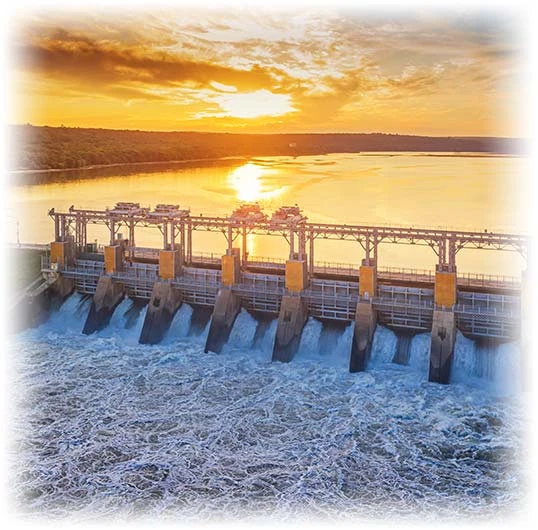Inertia and Frequency Control Ancillary Services
Ancillary services are used to manage the power system safely, securely, and reliably. These services maintain key technical characteristics
of the system, including standards for frequency, voltage, network loading, and system restart processes.
Of the various types of frequency control ancillary services (FCAS), inertia is most frequently compared to the fast frequency response (FFR)
service. Both inertia and FFR act to arrest the frequency, where inertia plays an important role during normal operating conditions and FFR
is only useful during contingency operations.
Inertia / FCAS
Inertia and FFR levels are inherently interlinked: the quantity and type of FFR required to arrest frequency excursions and act to return the system to a secure state is related to the amount of inertia that is available. The more inertia that is made available in the system, the more the FFR can be relied upon.
Hydro unit synchronous condenser mode
User can choose which hydro units can provide inertia to the system by enabling the synchronous condenser feature and operating mode transition start-up costs. Initial condition and energy usage are also represented by NCP.
Multi-objective FCAS requirements
Multiple options to define FCAS requirement by service: largest generator contingency, system inertia, interconnection flows, absolute limits, and any requirement combination between them.
FCAS offer trapezium
The maximum FCAS that can be enabled is bounded by the FCAS offer trapezium for that service.


New developments
Besides some important modelling refactoring tasks (hydropower units production, thermal fuel consumption and combined cycle operation), this version of NCP includes several modeling improvements, such as:
Hydropower plant
Spillway rating curve, infiltration x storage table, daily forebay ramps, time-average constraints, bypass valves with travel time and soft target storage definition.
Hydropower unit
Hill curve, inertia, frequency control ancillary services, sub-hourly maintenance schedule, multiple forbidden zones by forebay level.
General
Battery and group of plants upward / downward secondary reserve offers, negative market prices definition, disabling and enabling individual generation constraints.
Application Programming Interface (API) for Integration & Automation
API integration establishes communication between external applications and NCP. This facilitates the automation of data input/data transformation and control of the execution flow.
Real-time update
Real-time modification of any configuration data or scenario using instructions written in JSON protocol and/or CSV files.
Execution manager
Management and execution of simultaneous cases and/or different configurations of the same case.
API requests and handling response
Applications are provided as a HTTP service or a .NET library with an extensive data-dictionary.

Documentation
Review all NCP's powerful capabilities in the documents below.
Download
Download NCP 5.26 for Windows
NCP 5.26
Download for WindowsContact Us
Request a quote or a demo and connect with our high-qualified support team.
www.psr-inc.com
ncp@psr-inc.com





